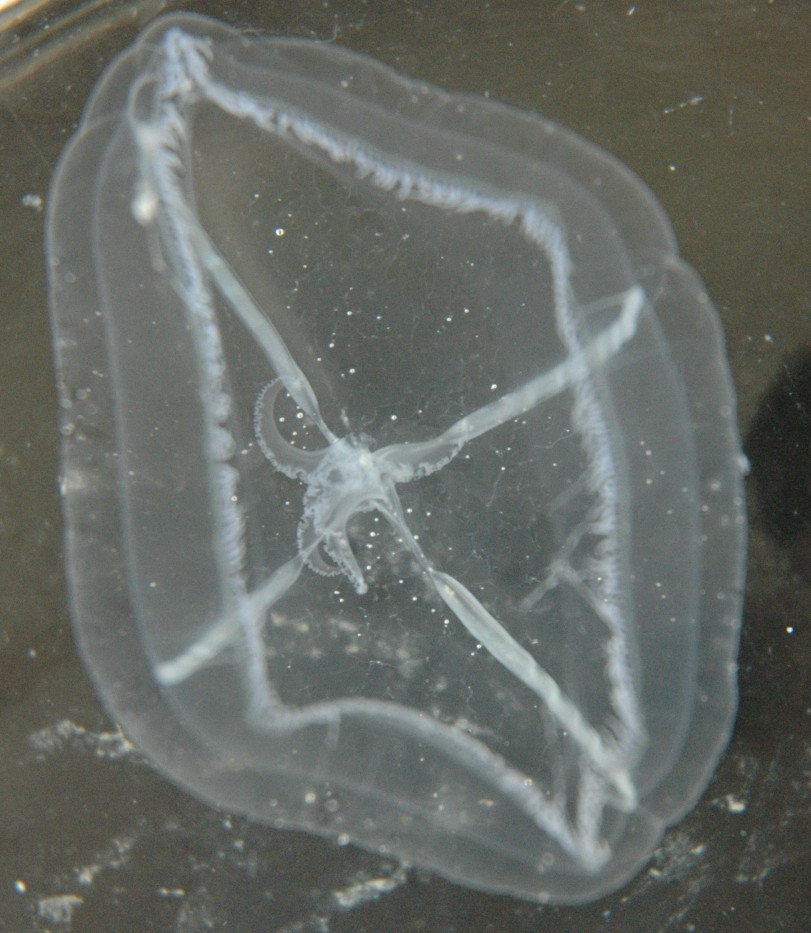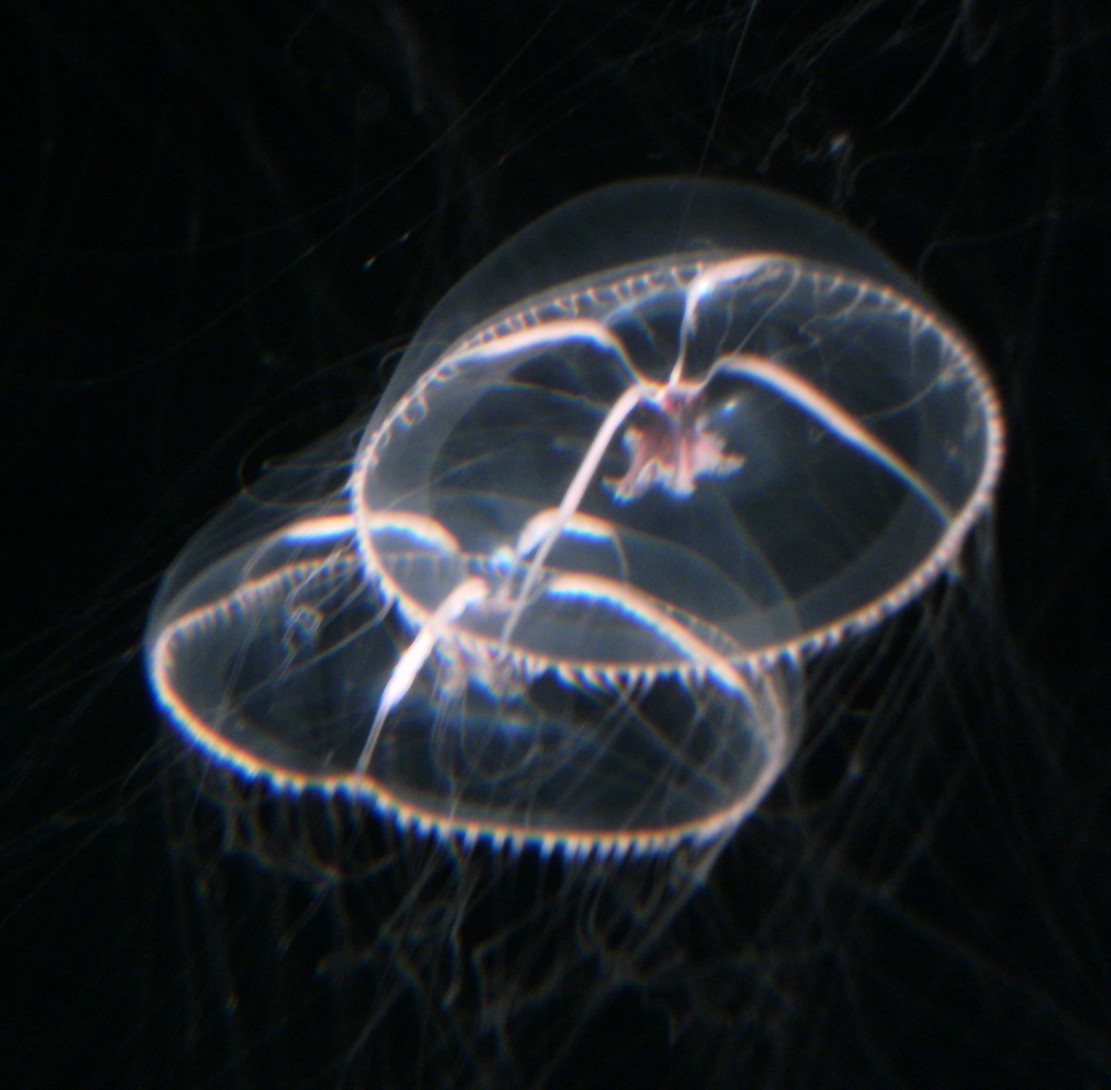Structure of polyp (determined in lab--never before reported from the wild): Generally resembles the catch-all genus Cuspidella. The colony grows as stolons. The stem does not have sausage-shaped segments. The hydranths are enclosed with a distinct hydrotheca. The gonophores are protected by a gonotheca or similar structure (Group Leptothecata). The straight-walled hydrothecae are as deep as or deeper than wide and the hydranth can withdraw into them, and they have an operculum. The operculum is merely an extension of the hydrothecal margin, and there are no creases at the base of the opercular plates. The hydrothecae are sessile (do not arise from pedicels). The hydrothecae are radially symmetrical and do not have true marginal cusps. Hydroid colonies produce medusae which they set free.
How to Distinguish from Similar Species: The 4 long, thin radial canals with the long, thin gonads attached to them make a distinctive cross shape which is easy to recognize. Mitrocomella. polydiademata medusae have 5-9 short tentacles between each set of long tentacles, a smooth exumbrella, and sometimes a pale pink color. Many other species with numerous tentacles have tentacles all of the same size.
Geographical Range: Bering Sea to southern CA (medusae--polyps have never been observed in the wild)
Depth Range: Epipelagic
Habitat:
Biology/Natural History:
This species is common at Friday Harbor. It luminesces if
disturbed
in the dark, especially in a band along the margin of the
bell. Medusae
appear in May and disappear in late fall.
| Return to: | |||
| Main Page | Alphabetic Index | Systematic Index | Glossary |
References:
Dichotomous Keys:Carlton, 2007
Flora and Fairbanks, 1966 (As Halistaura cellularia)
Kozloff, 1987, 1996
General References:
Johnson and Snook, 1955 (as Halistaura cellularia)
Lamb and Hanby, 2005
Wrobel and Mills, 2003
Scientific Articles:
Web sites:
General Notes and Observations: Locations, abundances, unusual behaviors:

The tentacles are numerous (up to 350), lined up along the margin of
the bell (not in clusters), and highly extensible. In this
view most
of them are highly contracted. When extended, long and
shorter ones
alternate.
Mitrocoma cellularia in Monterey Bay Aquarium. Photo by Dave Cowles, August 2010
Authors and Editors of Page:
Dave Cowles (2009): Created original page
CSS coding for page developed by Jonathan Cowles (2007)

